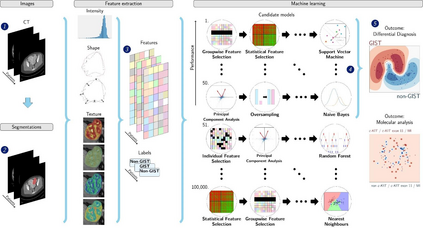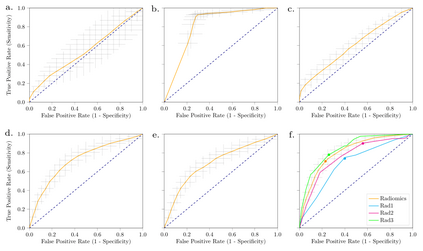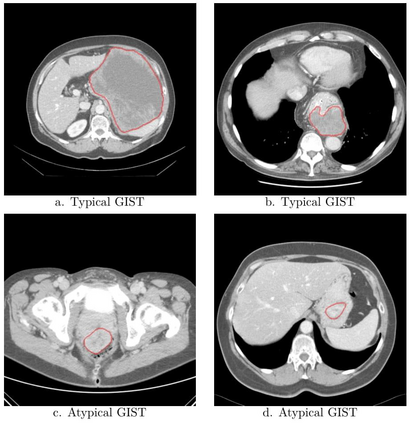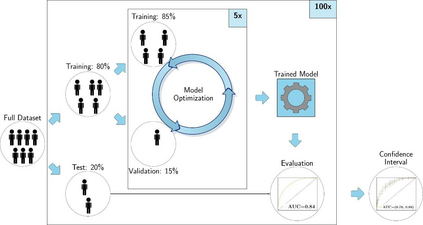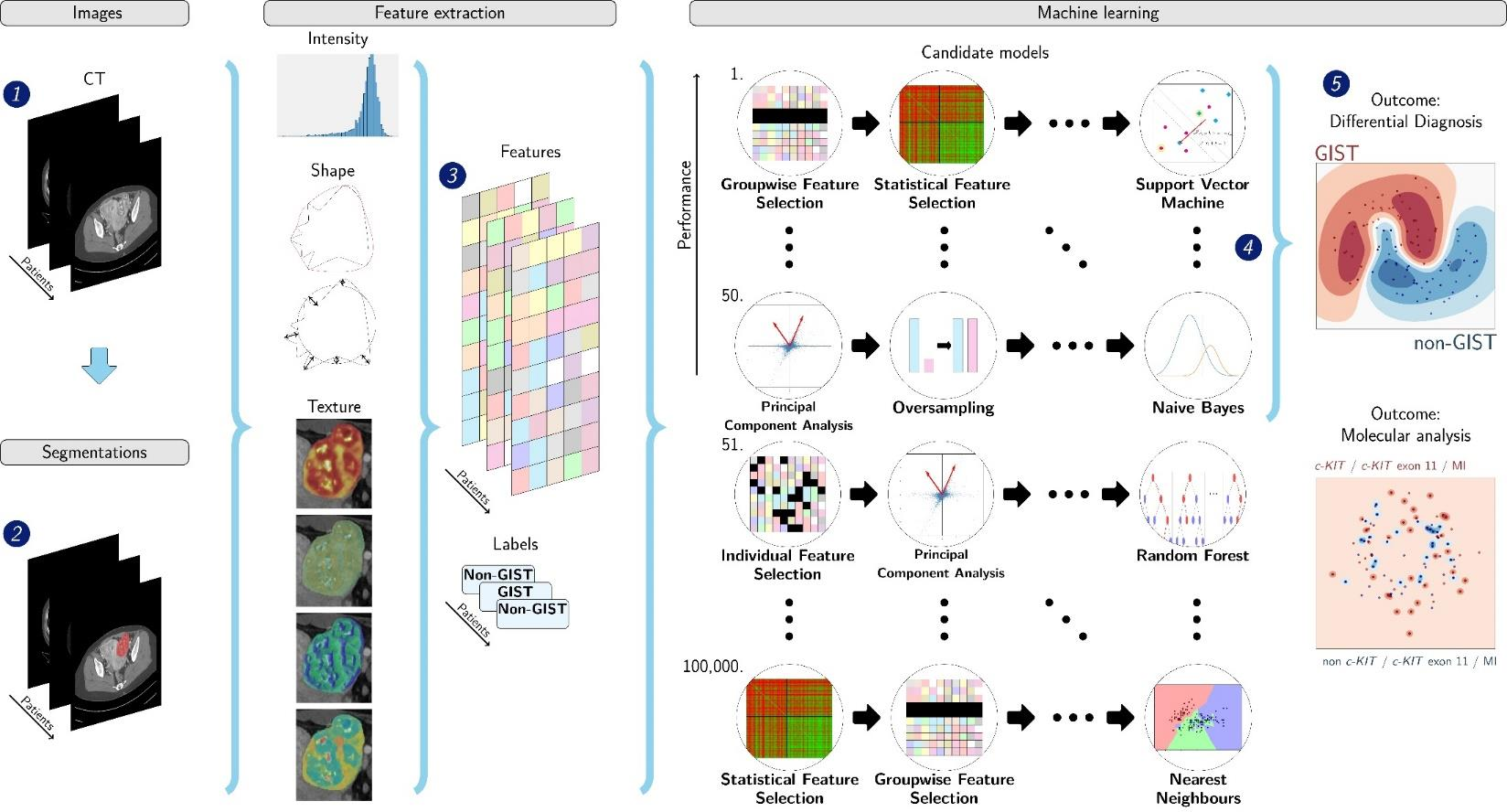
Distinguishing gastrointestinal stromal tumors (GISTs) from other intra-abdominal tumors and GISTs molecular analysis is necessary for treatment planning, but challenging due to its rarity. The aim of this study was to evaluate radiomics for distinguishing GISTs from other intra-abdominal tumors, and in GISTs, predict the c-KIT, PDGFRA,BRAF mutational status and mitotic index (MI). All 247 included patients (125 GISTS, 122 non-GISTs) underwent a contrast-enhanced venous phase CT. The GIST vs. non-GIST radiomics model, including imaging, age, sex and location, had a mean area under the curve (AUC) of 0.82. Three radiologists had an AUC of 0.69, 0.76, and 0.84, respectively. The radiomics model had an AUC of 0.52 for c-KIT, 0.56 for c-KIT exon 11, and 0.52 for the MI. Hence, our radiomics model was able to distinguish GIST from non-GISTS with a performance similar to three radiologists, but was not able to predict the c-KIT mutation or MI.
翻译:将胃肠癌从其他腹内肿瘤和GIST分子分析中区别开来,对于治疗规划来说是必要的,但由于其罕见性而具有挑战性。这项研究的目的是评估辐射学,以区分GIST与其他腹内肿瘤,以及GIST,预测C-KIT、PDGFRA、BRAF突变状态和线性指数(MI)。所有247人中包括病人(125 GISTS、122 非GISTs)经历了对比增强的静脉CT阶段。GIST与非GIST放射性模型,包括成像、年龄、性别和位置,在0.82的曲线下有一个平均区域(AUSC),3名放射学家拥有0.69、0.76和0.84的AUC,放射学模型有0.52的CUC,C-KIT Exon 11的0.56,以及MI的0.52。因此,我们的辐射学模型能够将GIST与非光学或MITS的性能与3的预测性能与MIT相比。
